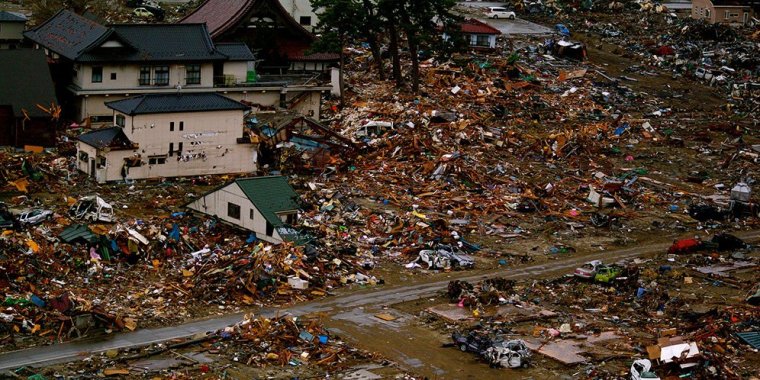| News / Science News |
Global disasters linked to warming Indo-Pacific seas
East Asian floods, African droughts and the frequent California fires may be linked to the rapid warming of the Indo-Pacific Ocean that impacts global rainfall patterns and corresponding weather, says a new study.

Asia has become prone to flooding in the past years. Photo: Mohri/UN-CECAR
“The Indo-Pacific warm pool, a region between the eastern Indian Ocean and western Pacific Ocean, with ocean temperatures generally warmer than 28 degrees Celsius, has been warming since the 1900s, but during 1981—2018, it expanded at a rate of about 400,000 square kilometres per year — the size of Thailand or Spain,” says Roxy Mathew Koll, lead author and climate scientist at the Indian Institute of Tropical Meteorology, Pune.
“This rapid warming has altered a major mode of the weather system called the Madden Julian Oscillation (MJO). The residence time (presence) of MJO clouds have shortened over the Indian Ocean by 3—4 days and increased over the west Pacific by 5—6 days. It is this change, noted in the past 40 years (1981—2018), that has altered weather patterns across the globe,” adds Koll.
MJO events travel a stretch of 12,000—20,000 kilometres eastwards from the Indian Ocean to the Pacific Ocean. Countries and regions most impacted by changes in MJO behaviour are the Maritime Continent region, including Indonesia, the Philippines, Papua New Guinea, parts of Malaysia, northern Australia, West Pacific, Amazon basin and southwest Africa, where rainfall is increasing, the study says. Over the Yangtze basin in China, north India and Polynesian islands south of the equator, rainfall is decreasing.
The study notes that it is very likely that the warm pool expansion will continue into the future, with increasing greenhouse gas emissions which may further intensify changes in global rainfall patterns. It raises concern over increased vulnerability of coastal settlements in the populated, low- to middle- income tropical countries to extreme weather events.
Co-author of the study and senior scientist at the US National Oceanic and Atmospheric Administration (NOAA), Michael McPhaden, tells SciDev.Net: “The MJO contributes to flooding, dry spells, heat waves, severe tropical storms and other extreme weather events in the far reaches of the globe.
Accurate forecasts of the MJO promise real economic advantage and will help better protect life and property in those regions where its effects are strongly felt.”
The study provides a critical benchmark for determining which computer models to trust for extended range weather forecasting, based on their ability to simulate the observed behaviour of the MJO in a changing climate. "European, US, Australian, Japanese, etc. shows a forecast skill for predicting some of these events at a two-week timescale. However, there is a huge scope for improvement," McPhaden adds.
Andréa Taschetto, from University of New South Wales’ Climate Change Research Centre, tells SciDev.Net, “Previous studies have suggested that MJO rainfall and circulation will change under global warming. However, the present study shows for the first time that, due to the warming of the Indo-Pacific oceans, changes in MJO circulation are already happening.”
“There is now a tendency for the MJO to decrease the early stages duration (reduce its time over the Indian Ocean) and increase its later stage duration (persist longer over the Maritime Continent and western Pacific),” says Taschetto. “This result has implications for rainfall in the Asia-Pacific region as under increasing emissions of greenhouse gases, surface temperature over the Maritime Continent is expected to continue to rise.”
Besides the MJO life cycle, Taschetto notes that there are many other climate phenomena, such as the El Niño-Southern Oscillation and Indian Ocean Dipole, which can together affect regional rainfall differently. (SciDev.Net)
YOU MAY ALSO LIKE





